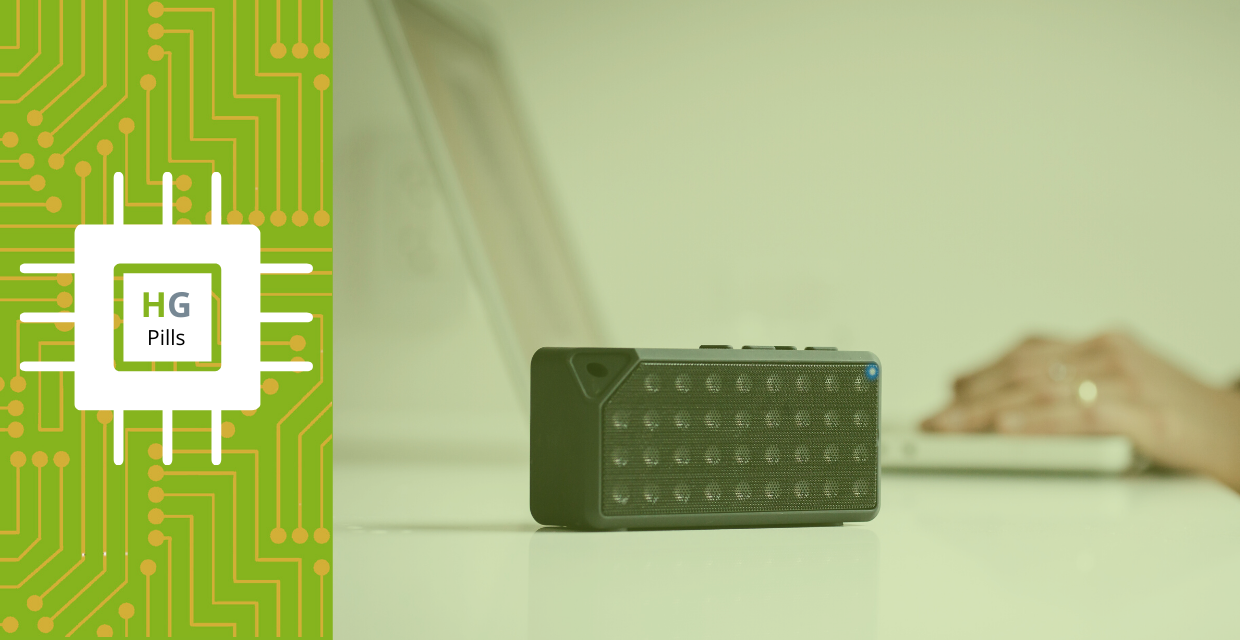
IoT devices are increasingly common in our daily use, but which technology is best for your device?
In this HG-Pills article, we will review the pros and cons of Wi-Fi and BLE (bluetooth low energy) technologies: two transmission protocols widely used for IoT devices that do not need a subscription (unlike other protocols such as LoRa, NBIoT, SIGfox,...).
HG-Pills: Wi-Fi vs. Bluetooth: Which one to choose for your IoT device?
To make sure you make the best choice, you should keep in mind the specifications that your product must have.
Therefore, the main factors to be taken into account are:
- Communication speed
- Range
- Energy consumption
- Security
- Compatibility with other devices
- Costs
Communication speed
The great evolution of BLE technology over the last few years has led it to version 5.0, allowing data streaming speeds of up to 2 Mbit/s.
This makes the BLE protocol an excellent solution for reading data, in countless applications such as: temperature sensors, accelerometers, GPS, etc..
However, it does not make it a good solution, when there is a need to transfer data in real time to a server. In this case, the best solution remains the wi-fi standard, which allows a communication speed of up to 1.3Gbit/s.
Range
In this regard, the BLE protocol has made great improvements: with some modules it is possible to transmit up to distances of 1500m, just over a football pitch. However, at these distances, the transmission bandwidth decreases, forcing us to send less data.
Even in this case, if you want to send data of a certain size, such as images, the best choice is wifi.
Energy consumption
This is the workhorse of BLE technology, in fact this protocol can in some cases consume up to 40 times less than Wi-Fi.
Although both operate in the same frequency band, 2.4GHz, Wi-Fi transmission requires much more power because its messages must be sent faster to maintain the band required by the standard.
Security
Initially, Bluetooth technology was very vulnerable, so it was very easy for hackers to access the data exchanged between devices. However, this problem was solved by AES-CCM cytography, which allowed a more secure data exchange.
However, Wi-Fi remains more secure, because through its security accesses (first WEP and now WPA2-AES) it uses a 256bit cytography, higher than 128bit of BLE technology.
Compatibility
Generally this is not a problem if the devices to interact with are recent models, otherwise BLE can give some trouble to projects.
Older devices, particularly PCs, with an older operating system may not be able to support the latest versions of the BLE protocol.
No problem for Wi-Fi.
Costs
BLE remains the best choice. Bluetooth devices are less expensive as they require less power consumption and consequently less frequent battery change/recharging.
Conclusions
As we have seen, the big difference in these two technologies lies in the bandwidth (the size of the data you want to send) and energy consumption.
Where data streaming needs to be fast, with large packets (e.g. sending 4k images in real time), Wi-Fi is the best solution.
If the need of the device is to measure data, with a not too high frequency, and then send it to a master, then the bluetooth may be the right choice.
However, it is also necessary to evaluate if the sampling, the sensors, the artificial intelligence and many other features used are appropriate for the service that the prototype should offer.
For this reason it is necessary to consult with professionals who can give you the right advice to make your prototype a high performance product minimizing the costs of mass production.
Hemargroup is specialized in this field, contact us to make your idea a successful company.
.png)
